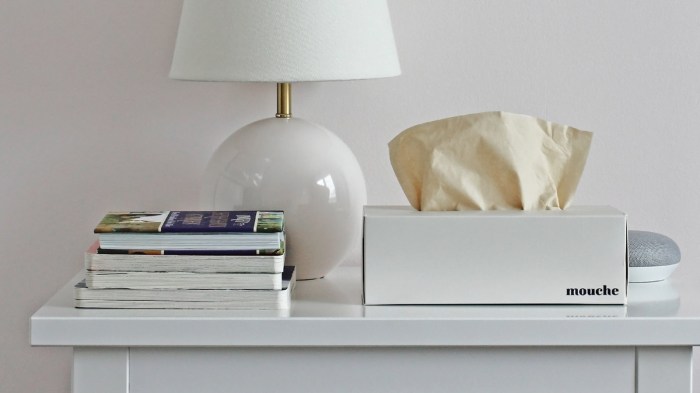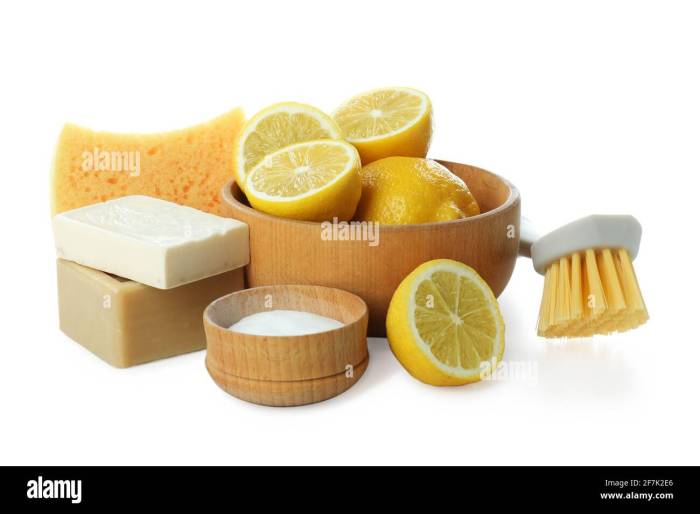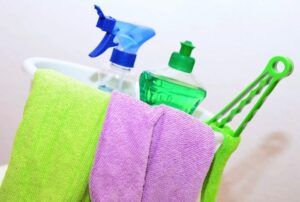
As the drive for sustainability grows, eco-friendly cleaning tools are becoming essential in our daily lives. These tools not only help reduce our environmental footprint but also offer numerous health benefits to users. Understanding their importance can guide us toward making better choices for our homes and the planet.
From biodegradable cleaning cloths to sustainable brushes, eco-friendly options are effective and safe for our families. This overview will explore the types, advantages, and how to choose the best eco-friendly cleaning tools that align with your values and needs.
Importance of Eco-friendly Cleaning Tools
The use of eco-friendly cleaning tools has become increasingly vital in today’s world, where environmental concerns are at the forefront of many discussions. These tools not only contribute to a cleaner and greener planet but also offer significant benefits for our health and well-being. Adopting sustainable cleaning practices can lead to a healthier home environment and a more sustainable future.Eco-friendly cleaning tools, often made from natural or biodegradable materials, play a crucial role in reducing environmental impact.
Conventional cleaning products often contain harsh chemicals that can pollute our air and water systems. By choosing eco-friendly options, we can significantly lower our carbon footprint and minimize toxic waste. For example, natural cleaning agents such as vinegar and baking soda are effective at cleaning without introducing harmful substances into our ecosystems.
Environmental Benefits of Eco-friendly Cleaning Tools
Using eco-friendly cleaning tools leads to various environmental advantages that contribute to a healthier planet. These benefits not only safeguard natural resources but also promote sustainable practices among consumers.
- Reduction in Chemical Pollution: Eco-friendly products are formulated with biodegradable ingredients, reducing chemical runoff into soil and waterways.
- Lower Carbon Footprint: Sustainable cleaning tools are often produced with lower energy consumption and emissions compared to traditional alternatives.
- Waste Minimization: Many eco-friendly products come in recyclable or compostable packaging, which helps to decrease landfill waste.
- Conservation of Resources: By utilizing natural materials, eco-friendly cleaning tools help preserve non-renewable resources.
Health Advantages for Users
Opting for sustainable cleaning products not only benefits the environment but also promotes better health for users. The absence of toxic chemicals in eco-friendly cleaning tools significantly reduces health risks associated with common cleaning supplies.
- Improved Indoor Air Quality: Natural cleaning products help maintain healthier air quality inside homes, reducing the incidence of respiratory issues.
- Reduced Allergens: Eco-friendly tools are less likely to irritate skin and eyes, providing relief for allergy sufferers.
- Safe for Children and Pets: Many eco-friendly cleaning products are non-toxic, making them safer for households with children and pets.
- Fewer Chemical Reactions: Using natural ingredients minimizes the risk of harmful reactions that can occur from mixing conventional cleaning products.
Impact of Traditional Cleaning Tools on Pollution and Waste
Traditional cleaning tools and products contribute significantly to pollution and waste, posing challenges that eco-friendly alternatives can effectively address. Understanding their impact is essential for making informed choices.
- Water Pollution: Conventional cleaners, when washed down the drain, can introduce harmful substances into waterways, impacting aquatic life.
- Air Pollution: Volatile organic compounds (VOCs) emitted from traditional cleaning products can lead to indoor air pollution, causing headaches and other health issues.
- Plastic Waste: Many traditional cleaning tools come in single-use plastic packaging, contributing to the global plastic waste crisis.
- Energy Consumption: The production and transportation of conventional cleaning products often involve high energy use, exacerbating environmental degradation.
Adopting eco-friendly cleaning tools is not just a choice; it is a commitment to a healthier lifestyle and a cleaner planet.
Types of Eco-friendly Cleaning Tools
Exploring eco-friendly cleaning tools offers a sustainable approach to maintaining cleanliness while protecting the environment. These tools not only help in reducing waste but also use materials that are safer for both human health and the planet. Understanding the different types of eco-friendly cleaning tools available can significantly impact your cleaning routine and make it more environmentally friendly.There is a wide variety of eco-friendly cleaning tools, each designed with sustainable materials that contribute to a greener lifestyle.
Here are some popular options worth considering:
Popular Eco-friendly Cleaning Tools
To understand the importance of using eco-friendly cleaning tools, it is essential to recognize the materials and effectiveness of each type. Here’s a list of commonly used tools along with their materials:
- Bamboo Brushes: Made from fast-growing bamboo, these brushes are biodegradable and naturally antimicrobial, making them perfect for scrubbing dishes or surfaces.
- Recycled Plastic Scrubbers: These scrubbers are made from discarded plastics that have been repurposed, reducing waste while effectively cleaning pots and pans.
- Natural Fiber Sponges: Crafted from materials like cellulose or coconut husk, these sponges are compostable and provide excellent scrubbing power without harming the environment.
- Microfiber Cloths: Although not biodegradable, they are reusable and require less water and chemical cleaners, making them a more sustainable option for dusting and wiping surfaces.
Biodegradable Cleaning Cloths
Biodegradable cleaning cloths are an excellent alternative to disposable options that contribute to landfill waste. These cloths are made from natural materials such as cotton, hemp, or bamboo, ensuring they break down easily in composting environments. They are highly effective in trapping dirt and grime without the need for chemical additives.For instance, cloths made from organic cotton are soft, absorbent, and can be used multiple times before disposal.
Hemp cloths are particularly durable and resistant to mold, providing a long-lasting cleaning solution. Using biodegradable cloths not only reduces your ecological footprint but also enhances your cleaning efficiency.
Comparison of Traditional vs. Eco-friendly Cleaning Brushes
When it comes to choosing between traditional and eco-friendly cleaning brushes, the differences in features and materials are significant. Traditional cleaning brushes are often made from synthetic materials that aren’t biodegradable, whereas eco-friendly brushes incorporate sustainable resources.
| Feature | Traditional Brushes | Eco-friendly Brushes |
|---|---|---|
| Material | Plastic and nylon bristles | Bamboo or biodegradable plastics |
| Durability | May require frequent replacement | Long-lasting with proper care |
| Environmental Impact | Contributes to plastic waste | Biodegradable or recyclable |
| Performance | Effective but can harbor bacteria | Antimicrobial properties and effective cleaning |
Choosing eco-friendly cleaning brushes not only supports sustainability but also ensures you are using tools that are safer for your family and the environment.
How to Choose Eco-friendly Cleaning Tools

When selecting eco-friendly cleaning tools, it’s essential to consider various factors that impact both effectiveness and environmental sustainability. Making informed choices ensures that your cleaning routine not only keeps your space spotless but also promotes a healthier planet. This guide discusses key factors to evaluate when choosing these tools and offers insights into recognizing quality eco-friendly products.
Key Factors for Selection
Material safety is a critical aspect when choosing eco-friendly cleaning tools. Opt for tools made from sustainable materials like bamboo, recycled plastics, or natural fibers. These materials are less harmful to the environment and can often biodegrade, reducing waste in landfills. Furthermore, ensure that the tools are free from harmful chemicals, which can negate their eco-friendly benefits.Consider the following factors when selecting eco-friendly cleaning tools:
- Material Composition: Look for products made from renewable, biodegradable, or recycled materials.
- Non-toxic Properties: Ensure the tools are free from harmful chemicals and synthetic compounds.
- Functionality: Evaluate the tool’s effectiveness in cleaning without reliance on harsh chemicals.
- Ease of Use: Choose tools that are user-friendly and comfortable to handle.
Certifications to Look For
Recognizing reputable certifications can significantly enhance your ability to select genuine eco-friendly cleaning tools. Certifications often guarantee that a product meets specific environmental and safety standards.Key certifications to seek include:
- Green Seal: This certification indicates that the product meets rigorous environmental standards for safety and efficacy.
- EPA Safer Choice: Products with this label are vetted by the Environmental Protection Agency to ensure they are safer for human health and the environment.
- Cradle to Cradle Certified: This certification focuses on sustainable production practices and the product’s entire lifecycle.
Evaluating Durability and Lifespan
Assessing the durability and lifespan of eco-friendly cleaning tools is vital for ensuring your investment is worthwhile. Durable tools reduce waste and are often more cost-effective over time, which makes them a smart choice for environmentally-conscious consumers.When evaluating durability, consider the following aspects:
- Material Strength: Look for tools made from high-quality, resilient materials that can withstand frequent use.
- Warranty Information: A product with a solid warranty often indicates the manufacturer’s confidence in its durability.
- User Reviews: Research customer feedback regarding the longevity of the product to gain insight into its performance over time.
“Investing in durable eco-friendly cleaning tools not only supports a sustainable lifestyle but also contributes to long-term cost savings.”
End of Discussion

In conclusion, embracing eco-friendly cleaning tools represents a meaningful step towards a healthier home and planet. By making informed choices, we can reduce pollution and waste while enjoying cleaner living spaces. The transition is not just beneficial; it’s a commitment to a sustainable future that we can all contribute to.
Query Resolution
What are eco-friendly cleaning tools?
Eco-friendly cleaning tools are products made from sustainable materials that minimize environmental impact while effectively cleaning.
Why should I choose eco-friendly cleaning products?
Choosing eco-friendly products reduces pollution, promotes better indoor air quality, and supports sustainable practices.
Are eco-friendly cleaning tools as effective as traditional ones?
Yes, many eco-friendly cleaning tools are designed to perform just as well, if not better, than their traditional counterparts.
How do I know if a cleaning product is truly eco-friendly?
Look for certifications such as Green Seal or EcoLogo, which indicate the product meets specific environmental criteria.
Can I make my own eco-friendly cleaning tools at home?
Absolutely! Many effective cleaning solutions can be made at home using natural ingredients like vinegar, baking soda, and essential oils.




